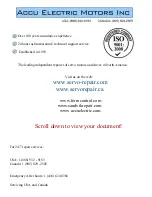
4
-10
Stationary Autotuning for Line-to-Line Resistance Only (T1-01 = 2)
Stationary autotuning for line-to-line resistance only can be used in any control method. This is the only auto-
tuning possible for V/f control and V/f control with PG modes.
Autotuning can be used to prevent control errors when the motor cable is long (50 m or longer) or the cable
length has changed since installation or when the motor and Drive have different capacities.
Set T1-01 to 2 for open-loop vector control, and then press the RUN Key on the Digital Operator. The Drive
will supply power to the stationary motor for approximately 20 seconds and the Motor Line-to-Line Resis-
tance (E2-05) and cable resistance will be automatically measured.
Precautions Before Using Autotuning
Read the following precautions before using autotuning.
•
Autotuning the Drive is fundamentally different from autotuning the servo system. Drive autotuning auto-
matically adjusts parameters according to detected motor parameters, whereas servo system autotuning
adjusts parameters according to the detected size of the load.
•
When speed precision or torque precision is required at high speeds (i.e., 90% of the rated speed or higher),
use a motor with a rated voltage that is 20 V less than the input power supply voltage of the Drive for 200-
240V-class Drives and 40 V less for 380-480V-class Drives. If the rated voltage of the motor is the same as
the input power supply voltage, the voltage output from the Drive will be unstable at high speeds and suf-
ficient performance will not be possible.
•
Use stationary autotuning whenever performing autotuning for a motor that is connected to a load.
•
Use rotational autotuning whenever performing autotuning for a motor that has fixed output characteris-
tics, when high precision is required, or for a motor that is not connected to a load.
•
If rotational autotuning is performed for a motor connected to a load, the motor parameters will not be
found accurately and the motor may exhibit abnormal operation. Never perform rotational autotuning for a
motor connected to a load.
•
If the wiring between the Drive and motor changes by 50 m or more between autotuning and motor instal-
lation, perform stationary autotuning for line-to-line resistance only.
•
If the motor cable is long (50 m or longer), perform stationary autotuning for line-to-line resistance only
even when using V/f control.
•
The status of the multi-function inputs and multi-function outputs will be as shown in the following table
during autotuning. When performing autotuning with the motor connected to a load, be sure that the hold-
ing brake is not applied during autotuning, especially for conveyor systems or similar equipment.
•
To cancel autotuning, always use the STOP Key on the Digital Operator.
Tuning Mode
Multi-function Inputs
Multi-function Outputs
Rotational autotuning
Do not function.
Same as during normal
operation
Stationary autotuning
Do not function.
Maintain same status as
when autotuning is started.
Stationary autotuning for line-
to-line resistance only
Do not function.
Maintain same status as
when autotuning is started.
IMPORTANT
1. Power will be supplied to the motor when stationary autotuning is performed even though the motor
will not turn. Do not touch the motor until autotuning has been completed.
2. When performing stationary autotuning connected to a conveyor or other machine, ensure that the
holding brake is not activated during autotuning.
















































